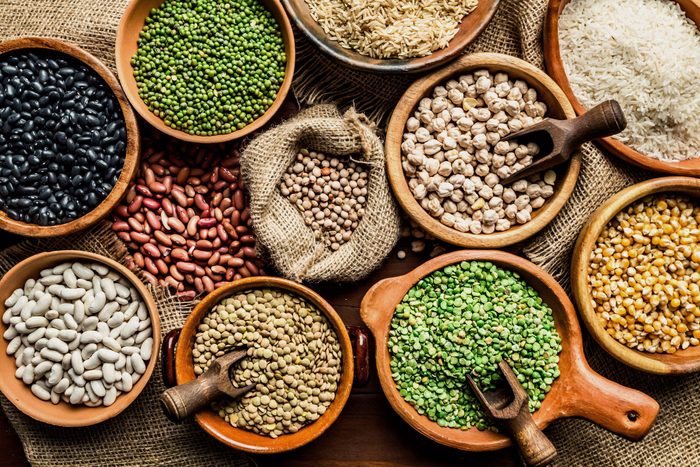
Choosing allergy-friendly plant-based proteins
With limited meat availability and concerns related to health and the environment due to Covid-19, more consumers are embracing plant-based protein sources. And if you’re trying to cut back on meat, and you have a food allergy, you need to steer clear of common allergens, such as milk, fish, shell fish, tree nuts, eggs, fish, wheat, and soy.
According to a 2019 survey from the International Food Information Council, one in six consumers report having a food allergy in the household, with 34 percent stating that the allergy is either very severe or extremely severe. Allergies may be an issue for those going meatless as faux meat products are commonly made with soy, wheat, and nuts. Fortunately, there are also plenty of allergen-free options, and they’re healthful for everyone. In other words, even if you can safely consume allergens, there are options you can add to your eating routine as a smart way to expand your nutrient intake and variety.
Here is a list of seven foods that are free of the “big eight” allergenic foods. They are protein-rich, healthful, and more eco-friendly than meat. I’ve highlighted their nutritional benefits and simple, balanced ways to enjoy them as part of meatless meals.
One important caveat: If you or someone in your home has a food allergy, it’s important to always read food labels. The Food and Drug Administration (FDA) requires that food labels must clearly identify the eight major food allergens, or any protein derived from those ingredients.
For example, a label may state “Contains wheat, milk, and soy.” But products are often reformulated, so double check even if you purchase it regularly. You’ll also want to look for statements about trace ingredients or manufacturing, such as, “May contain traces of milk,” or “Manufactured in a facility that also processes peanuts.”
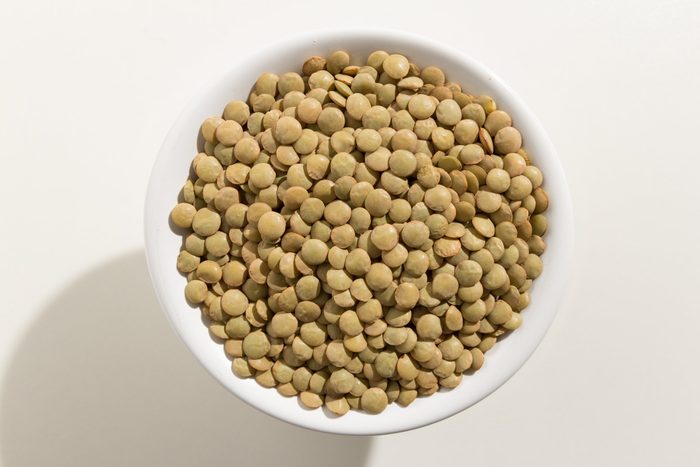
Lentils
Lentils are chock full of vital nutrients. One cup of cooked lentils provides about 18 grams of protein, in addition to 15 grams of filling fibre (60 percent of the daily minimum target), along with health-protective antioxidants, B vitamins, and key minerals, including magnesium, potassium, zinc, and iron. A 2017 review, published in the International Journal of Molecular Sciences, concludes that lentil consumption is tied to a lower risk of obesity, type 2 diabetes, heart disease, and cancer. Lentils also possess antimicrobial properties, and their prebiotic content feeds good bacteria in the gut linked to digestive health, anti-inflammation, and immune function, according to a 2013 study in Nutrients.
Tip: You can find pre-cooked, ready-to-eat steamed lentils in the produce section of many markets. But preparing dry, bagged lentils is also simple. Since lentils don’t require soaking, they cook on the stovetop as easily as pasta. Use lentils in place of ground meat in salads, tacos, curries, meatless Bolognese, stuffed peppers, veggie chilis, and soups. You can also transform lentils into “meatballs” or lentil loaf, paired with a generous portion of extra virgin olive oil sautéed or oven roasted veggies, or riced or mashed cauliflower.
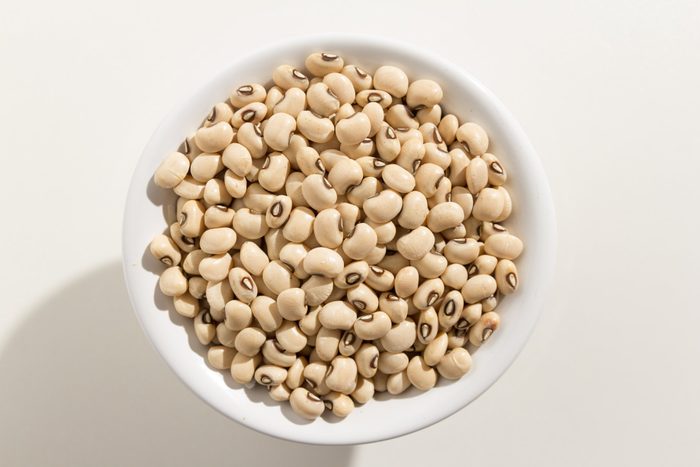
Beans
Beans, a cousin to lentils, are also nutrient powerhouses. One cup of navy beans provides about 14 grams of protein and roughly 10 grams of fibre, in addition to key nutrients, including potassium, iron, and calcium. A 2017 study, published in the International Journal of Molecular Sciences, finds that beans are also rich in polyphenols, a type of antioxidant tied to anti-inflammation, blood sugar regulation, and protection against cancer, heart disease, and obesity.
Canned beans are a convenient shortcut if you want to skip the steps involved with cooking dry beans, including soaking before boiling. Look for no salt added canned beans that are BPA free. The latter limits exposure to bisphenol A, a chemical used to coat metallic cans that may contribute to metabolic disorders, including type 2 diabetes and obesity, according to a 2017 study in the International Journal of Environmental Research and Public Health. The wide variety of beans offers numerous options for using them in place of meat.
Tip: Try black beans in tacos, barbecue baked beans in place of barbecue chicken, and pinto beans rather than ground turkey in chili. Swap chicken for cannellini beans in a cacciatore or chilled chickenless salad. Mashed beans can also be formed into burger patties, served in crisp lettuce wraps along with avocado, tomato, and onion. Also, try these nutritious canned bean recipes.
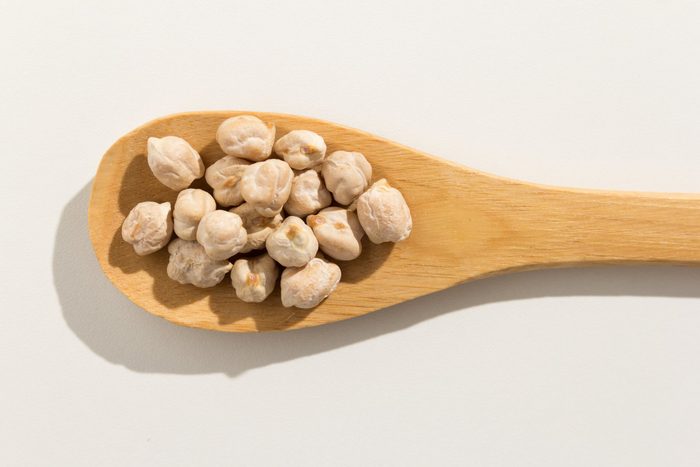
Chickpeas
One cup of boiled chickpeas contains 14 grams of protein, in addition to over 12 grams of gut-healthy fibre, antioxidants, and a wide range of vitamins and minerals. According to a 2016 study, published in the journal Nutrients, people who regularly consume chickpeas and/or hummus have a higher intake of several key nutrients. These include fibre, vitamins A, E, and C, folate, magnesium, potassium, and iron. Chickpea and hummus eaters are also 53 percent less likely to be obese, and have lower BMIs and waist measurements compared to non-chickpea/hummus eaters.
Tip: Hearty chickpeas work well in place of meat in stir fries, stews, and soups. You can also replace the deli meat in a sandwich with a thick layer of hummus, or use whole or minced chickpeas instead of meat in enchiladas. Because chickpea pasta is so protein rich, you can simply toss it with extra virgin olive oil, tomato sauce, additional veggies, and herbs for a complete meal. Or use it to make a simple chilled pasta salad, dressed with balsamic vinaigrette with chopped veggies and seasonings.
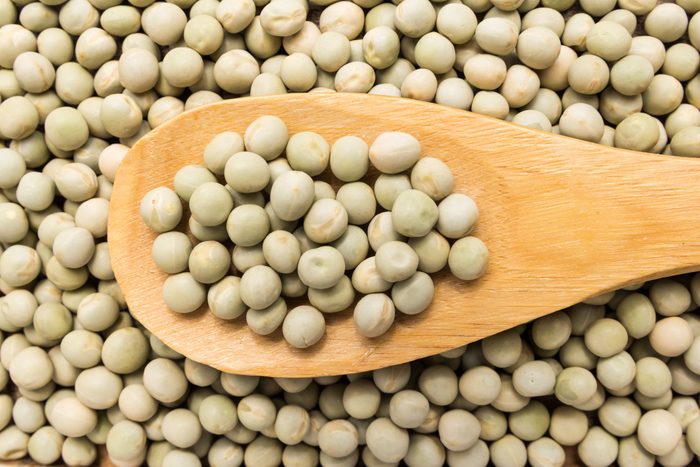
Pea protein products
Pea protein products have exploded in popularity in recent years, partly due to their allergen-friendly status. Sourced from yellow split peas, widely available pea protein foods include powders for smoothies, and faux meat products, such as burgers, crumbles, sausages, and chicken-like tenders, designed to be used as direct replacements for meat.
Tip: While the nutritional value varies from product to product, a veggie patty made with pea protein as the first ingredient can easily pack over 20 grams of protein. Note: If you’re avoiding common allergens, always check the food label to ensure that pea protein hasn’t been combined with another ingredient like eggs, wheat, or soy.
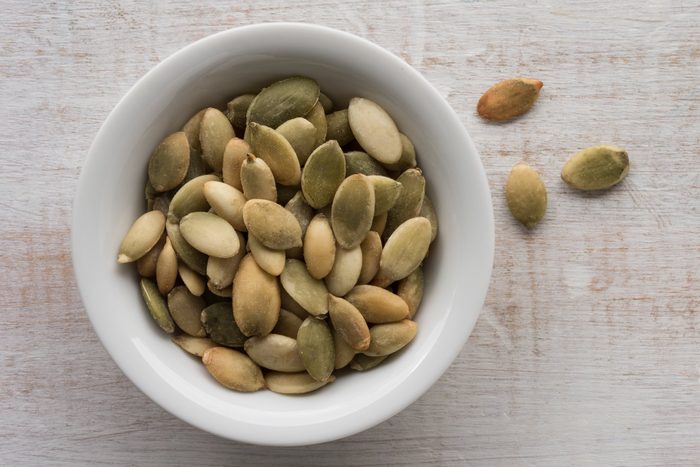
Pumpkin seed tofu
If you enjoy the versatility of tofu but can’t eat soy, a new product called Pumfu, made simply from organic pumpkin seeds and filtered water, can fill the gap. A four ounce portion provides 17 grams of plant protein, 28 grams of healthful fat, six grams of carb with five as fibre (one gram of carb), along with 30 percent of the daily target for iron.
Tip: The texture and flavour are similar to firm tofu, and you can use it in the same way, which includes eating it right out of the package, or adding it to salads or hot dishes. Dice it into cubes and enjoy as a picnic style snack in place of cured meat, along with grapes or olives. Add to summer rolls, stir fries, curries, sandwiches, even pizza. Because Pumfu is firm, it can also be seasoned or breaded like chicken breast and used to make mock wings or tenders.
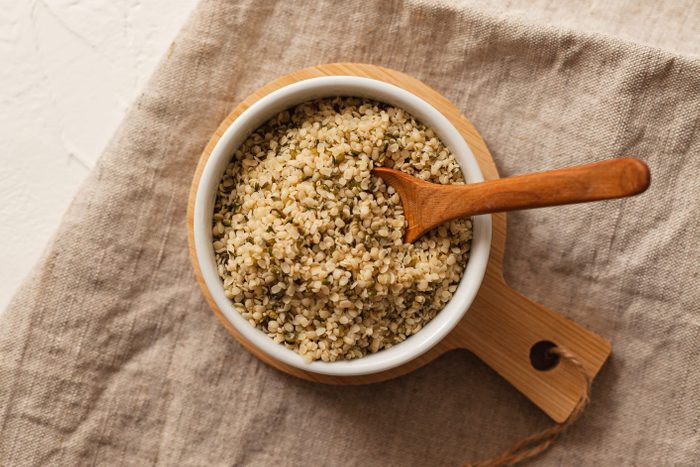
Hemp seeds
Hemp-derived products like cannabidiol (CBD) and edible cannabis are incredibly trendy at the moment. Edibles contain tetrahydrocannabinol, or THC, the main psychoactive ingredient in marijuana. However, according to the FDA, hemp seed-derived ingredients contain only trace amounts of CBD and THC, which the seeds may pick up during harvesting and processing when they are in contact with other parts of the plant (meaning you can’t get high from eating hemp seeds).
Tip: What the seeds do provide however is protein. A three tablespoon serving of Nutiva contains 10 grams of protein, in addition to 50 percent of the daily goal for magnesium and phosphorus, 25 percent for zinc, and 15 percent for iron. Like sunflower seeds, hemp seeds can be combined with other plant foods to create protein-rich plant-based meals. Sprinkle them onto salads, tacos, pasta dishes, and stir fries, or add them into lentil or bean based meatballs and burgers. Hemp seeds can also be incorporated into snacks, like energy balls and smoothies.
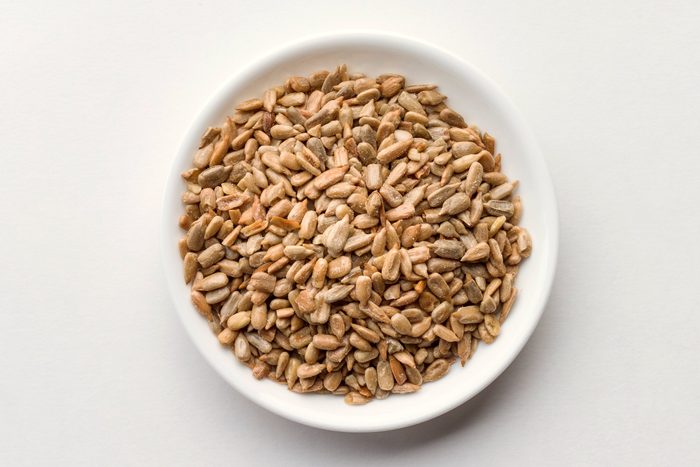
Sprouted sunflower seeds
While peanuts and tree nuts, like almonds, walnuts, pistachios, and cashews, are common allergens, seeds are not, which makes them a good whole-food, plant-based protein option. Of the bunch, which includes sesame and chia seeds, sprouted sunflower seeds are among the most protein rich and versatile per serving. A quarter cup portion of Go Raw provides six grams of protein, in addition to 70 percent of the daily target for immune-supporting vitamin E, and at least 10 percent of the daily goal for vitamin B6, folate, phosphorus, magnesium, zinc, selenium, copper, and manganese.
Tip: Nibble on seeds in place of an animal-based snack like jerky. Or use seeds as a garnish, to add crunch and further boost the protein content of plant-based dishes like salads, tacos, stir fries, and chili.
Next, read about the secrets nutritionists won’t tell you for free.
